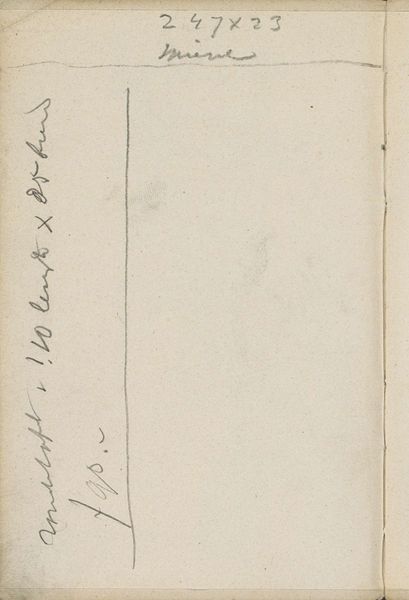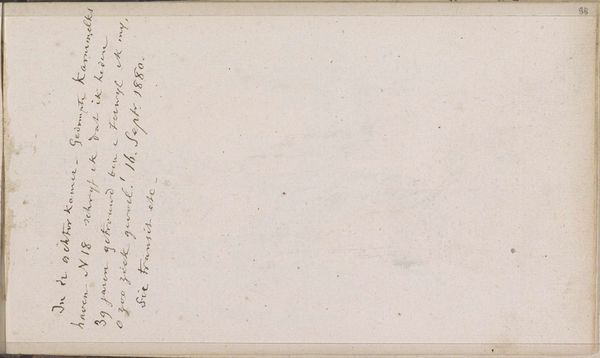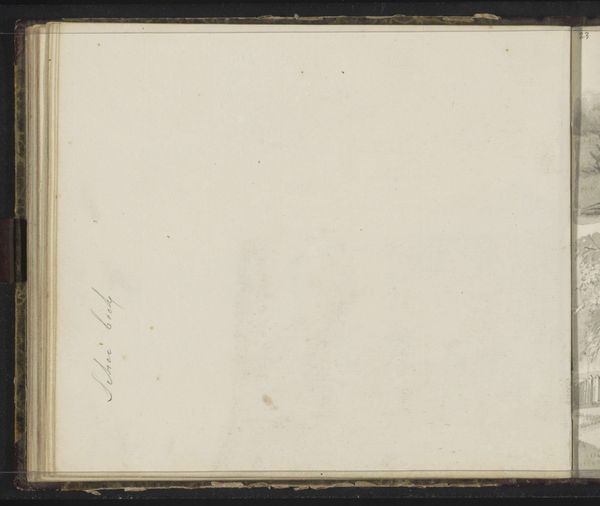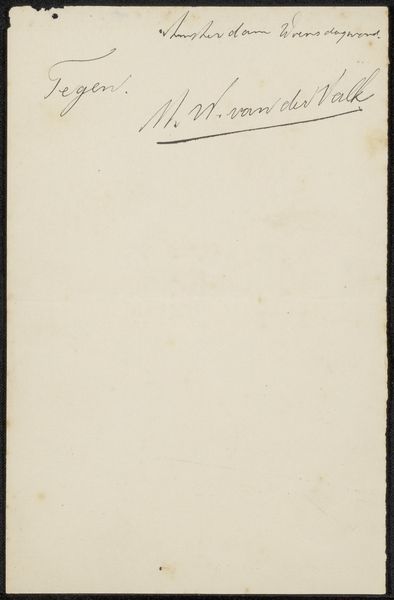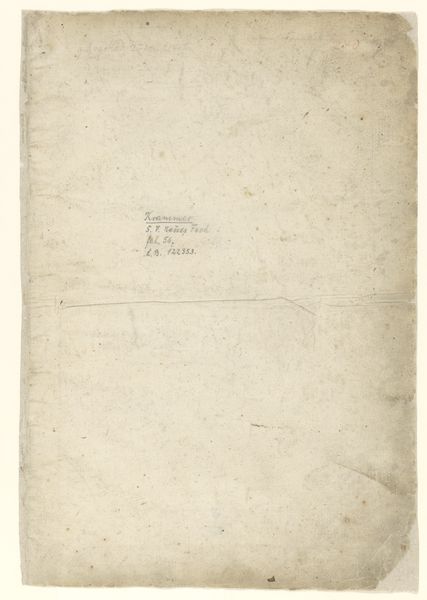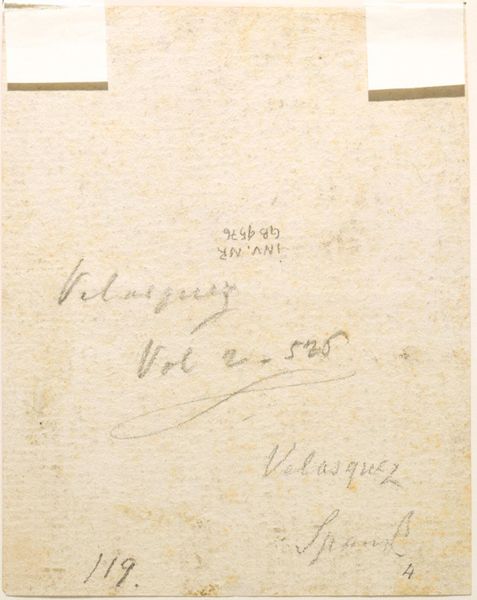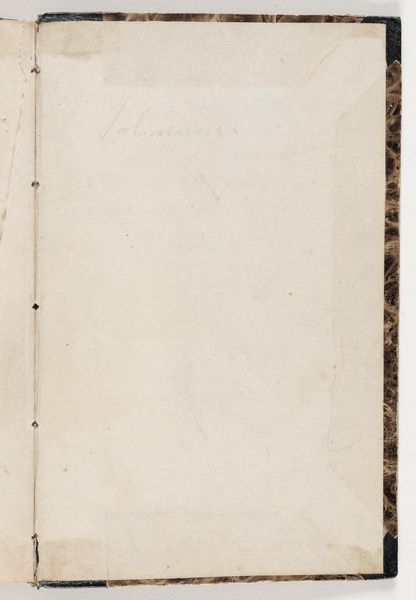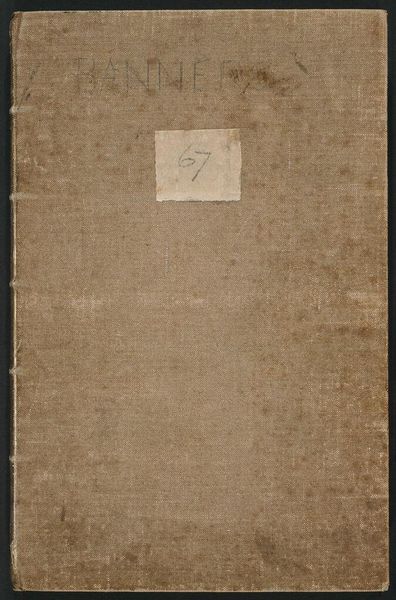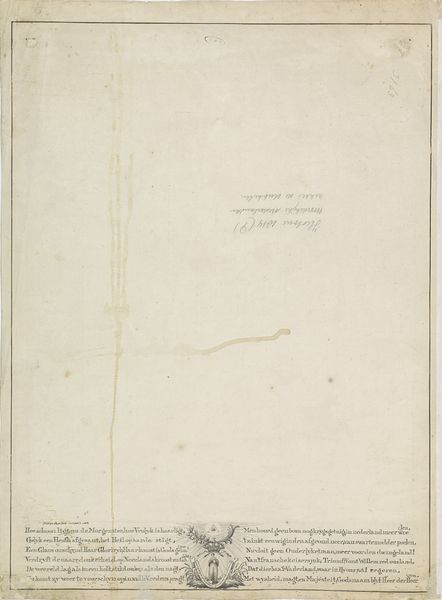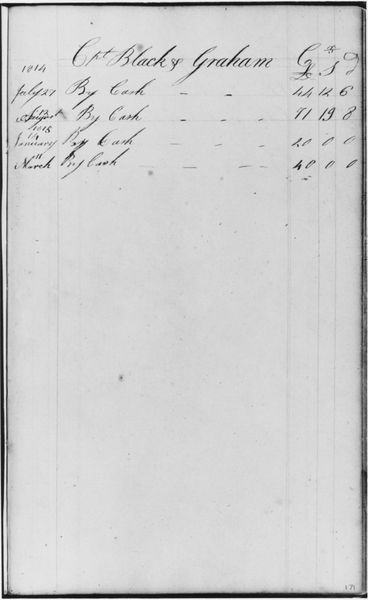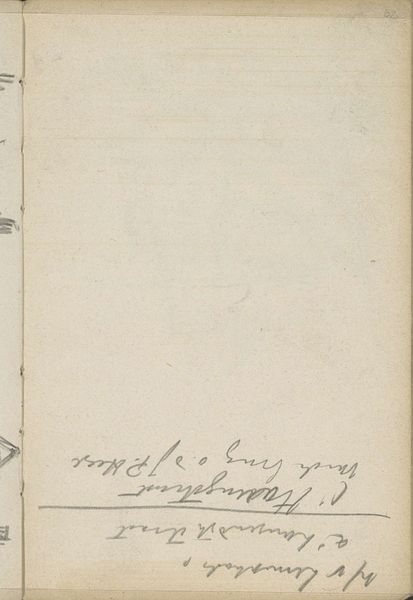
Brown Ink Inscription (Crossed Out) (from Sketchbook) 1811 - 1893
0:00
0:00
drawing, paper, ink, pencil, graphite
#
drawing
#
ink paper printed
#
paper
#
ink
#
pencil
#
ink colored
#
abstraction
#
line
#
graphite
#
monochrome
Dimensions: Dimensions unavailable
Copyright: Public Domain
Editor: This is "Brown Ink Inscription (Crossed Out) from Sketchbook," made by John William Casilear sometime between 1811 and 1893. It’s ink, graphite, and pencil on paper. There's something quite stark about this image... the emptiness of the page versus the intensity of that one scribbled-out section. What do you see in this piece? Curator: It is indeed sparse, isn't it? What strikes me is the palimpsestic quality—that sense of layered meaning, of something partially erased but still present. We have to ask, what was the original inscription, and why was it crossed out? What does it mean to try and obliterate an idea, a word, a concept? Does Casilear's action represent censorship, a change of heart, or perhaps the messy and often frustrating nature of the creative process itself? Editor: I never considered that point... Perhaps he had written something down and then felt like it was no longer representative of him. A sort of self-criticism reflected onto the art? Curator: Precisely. And we can broaden this. Think about historical narratives – who gets to write them, whose voices are silenced or erased? Even the act of preservation, deciding what survives and what doesn’t, carries immense power. What appear to be mistakes are still speaking and deserve to be questioned. Editor: That's a really powerful way to look at it. So, even in what seems like a simple doodle, there's this undercurrent of larger questions about power, representation, and the stories we tell ourselves? Curator: Exactly. The crossing out becomes not an end, but a beginning, prompting us to excavate and question the hidden narratives. Editor: I'll never look at a crossed-out line the same way again! This was such a cool conversation. Curator: Agreed. It highlights the importance of actively questioning the layers of meaning embedded in artworks.
Comments
No comments
Be the first to comment and join the conversation on the ultimate creative platform.

